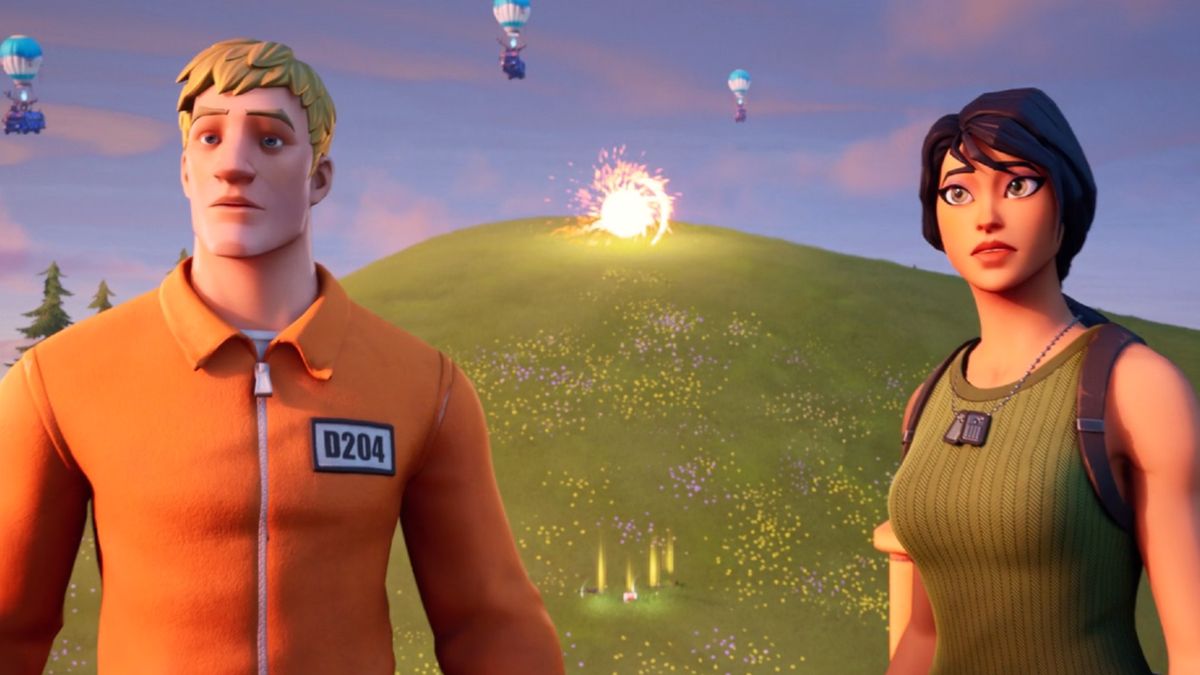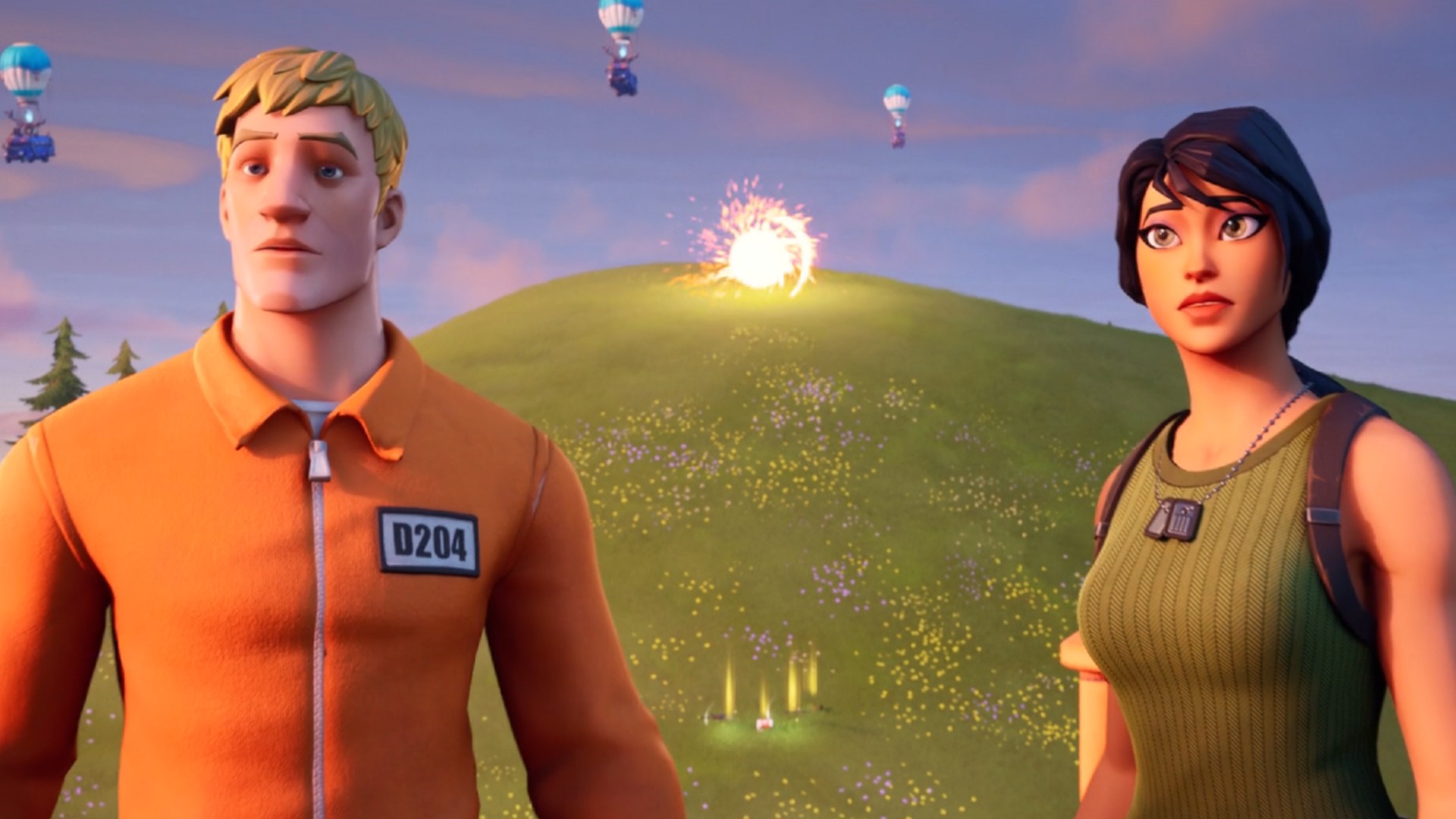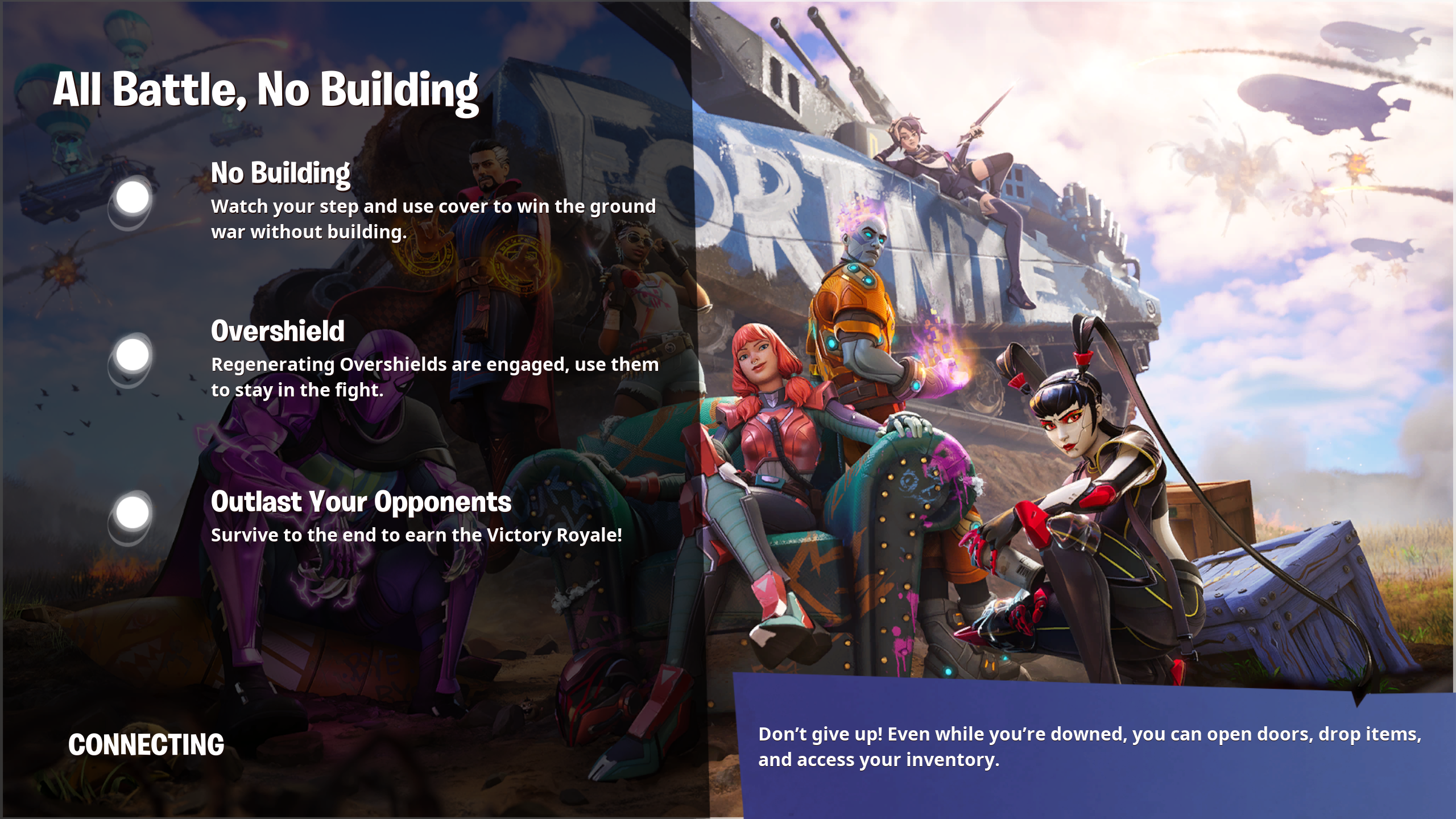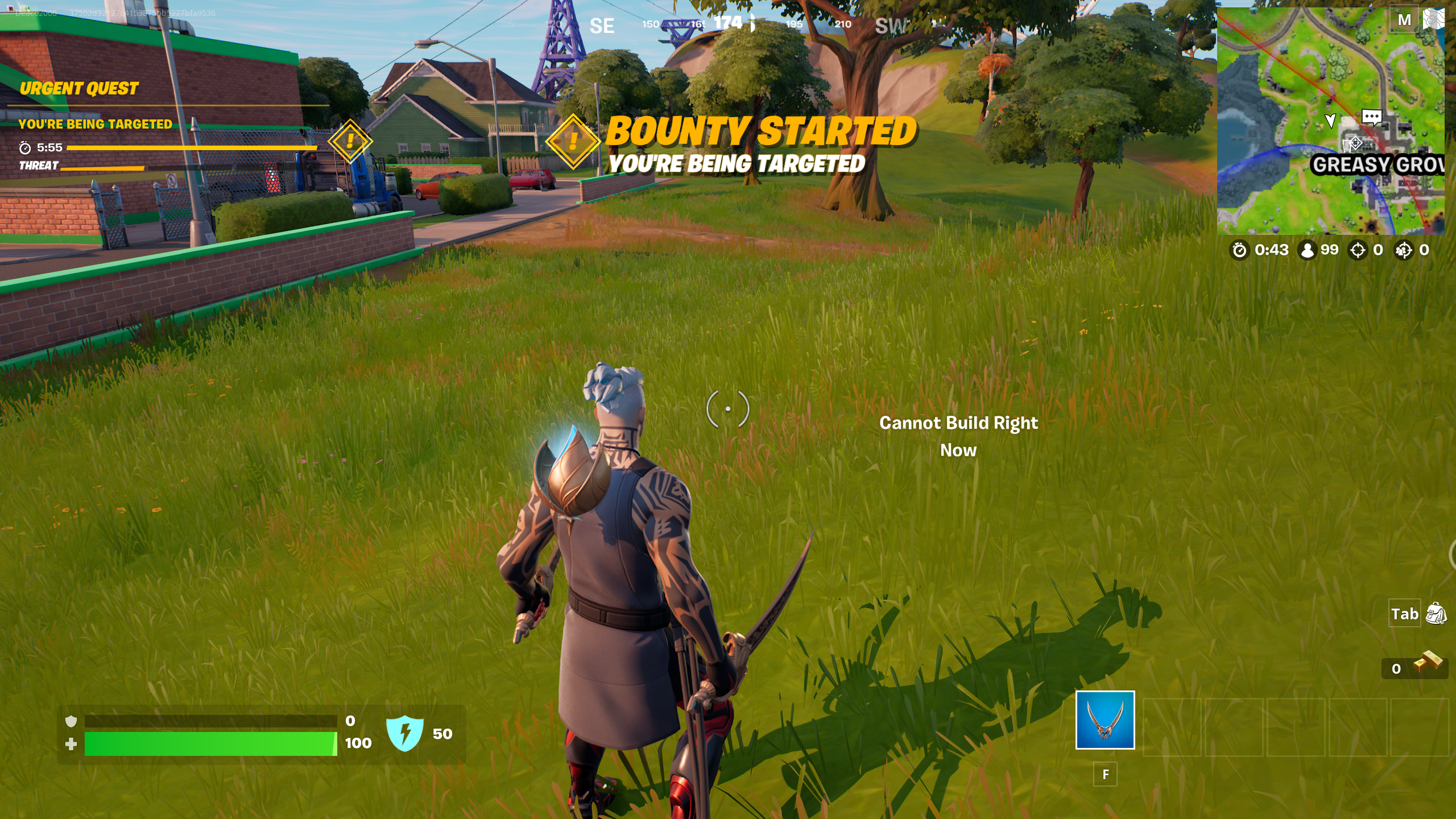
- Home
- PS5
- Battle Royale
- Fortnite
fortniters

If you build it, they will come. If you stop building it, well, you've got Fortnite in its current state. It may seem hard to fathom, but for the next week or so, one of Fortnite's central, most recognisable mechanics has been disabled. With Fortnite building removed, players are no longer able to craft defenses, platforms, and Architect of the Year-worthy constructs in the heat of battle. It's a sweeping change that prominent online leakers have been forecasting for some time, which, having been rolled out for the beginning of the battle royale's Chapter 3 Season 2, is having a profound impact on how players are approaching the game.
As you might expect, Epic removing building from Fortnite has been tied to the game's overarching narrative. But in practice, where it really matters, construction has been swapped out for new sprint, parkour, and bolstered slide maneuvers – wherein you can now batter down doors while on the slide. The return of Fortnite building is expected to happen next week, granted, but it's hard to see how this is anything but Epic testing the waters with the future in mind.

In any event, what Fortniters have to contend with right now is a bigger map with bigger gaps between cover. This doesn't affect things too much in the early stages of each round, but when things begin to close in – as the player count drops and when you're forced to expose yourself in bursts while racing to the next stage of the storm – being unable to throw up makeshift defenses around you on the fly changes the complexion of the game altogether. Suddenly the distance between bricks and mortar cover feels huge, and, no matter how much or little you tend to build in normal conditions, the fact that you don't have that safety net whatsoever at the moment feels like skydiving without a glider.
"If you can't out-build 'em, out maneuver 'em," you're told upon touching down on The Island, before being made to execute the compensatory measures Fortnite has installed in place of its incommunicado building suite. 'Sprinting' is the best of the bunch, allowing you to run faster than before, meaning you can make up more ground while dashing for cover, all the while limited by a new sprint meter. 'Mantling' is the most interesting, and is something, I reckon, could hang around, pardon the pun, even when building does return. "Gaining the high ground has always been key to winning a battle," reads an official Chapter 3 Season 2 blurb. "And fortunately, where your feet fail, your hands will now help you out." In practice, this sees the introduction of Lara Croft/Nathan Drake-style rooftop parkour and ledge-grabbing, which really comes to the fore in the latter stages of matches; in Solo play especially.
In one bout, when the storm circle closed around Tilted Towers, for example, I found myself in the remaining six. Those familiar with the closing stages of Fortnite's last person-standing deathmatches will know that different locations demand different strategies – and while fortress-building tends to make more sense in wider, more open and flatter arenas (in order to create cover and gain vantage points in lieu of anything organic), scaling Tilted Towers' vertical structures is definitely otherwise made easier by throwing up a handful of makeshift platforms.
Without the ability to build, though, I found myself so preoccupied with trying to work out how the hell do I get up there that I'd failed to notice the other five players scaling the buildings around me. By the time I did reach the roof of one block, I was instantly ambushed in a scene akin to Half-Life 2's Ravenholm; only instead of Gordon Freeman blasting his way through Headcrab Zombie hordes with a shotgun, I threw myself into the air, missed the adjoining building's gutter, and, with outstretched arms, hit the deck harder than Wile E. Coyote.
Building something

"Instead of Gordon Freeman blasting Zombies with a shotgun, I threw myself into the air, and, with outstretched arms, hit the deck harder than Wile E. Coyote."
That was a cruel lesson, but a perfect example of the subtleties that removing Fortnite building impresses on general play. Less subtle, is the introduction of an 'Overshield' – a permanent and auto-recharging fixture that sits atop standard shields and health – which is another defensive measure designed to bridge the space vacated by building. It won't save you after taking a header from seven stories up, mind you, but it can save your skin should you catch a bullet or two in the heat of battle.
The vaulting and unvaulting of weapons is a staple feature of any given Fortnite update, but the specific weapons unvaulted this time around are best suited to close-quarters fire-fighting – not least Drum Shotguns, Remote Explosive, and Thermal Scoped Assault Rifles. None of this (opens in new tab), of course, is a coincidence on Epic's part. The removal of building may have been woven into the game's increasingly convoluted narrative in this instance, but doing so delivers such a fundamental shift to the familiar Fortnite formula that it's difficult to see the game without a no-build mode in some form from hereon. And while removing such a staple feature of Fortnite sees the game more closely reflecting the likes of Apex Legends and Warzone, it still feels distinct enough to set it apart from the pack – full of speedy action, pops of color, and no shortage of playee-induced carnage.
Pro-building Fortniters can rest easy knowing building remains intact in the game's Competitive and Arena game modes, but it's otherwise going to be a long week or so in the main game for those players. In the meantime, you'll find me making use of Fortnite's bolstered sliding mechanics that now let you coast for literally dozens of meters at a time before battering down doors. That's never not fun and looks totally bad ass. Look, see:
By removing building, Fortnite feels like a different game. Here are more games like Fortnite worth your time.

Joe is a Features Writer at GamesRadar+. With over five years of experience working in specialist print and online journalism, Joe has written for a number of gaming, sport and entertainment publications including PC Gamer, Edge, Play and FourFourTwo. He is well-versed in all things Grand Theft Auto and spends much of his spare time swapping real-world Glasgow for GTA Online’s Los Santos. Joe is also a mental health advocate and has written a book about video games, mental health and their complex intersections. He is a regular expert contributor on both subjects for BBC radio. Many moons ago, he was a fully-qualified plumber which basically makes him Super Mario.